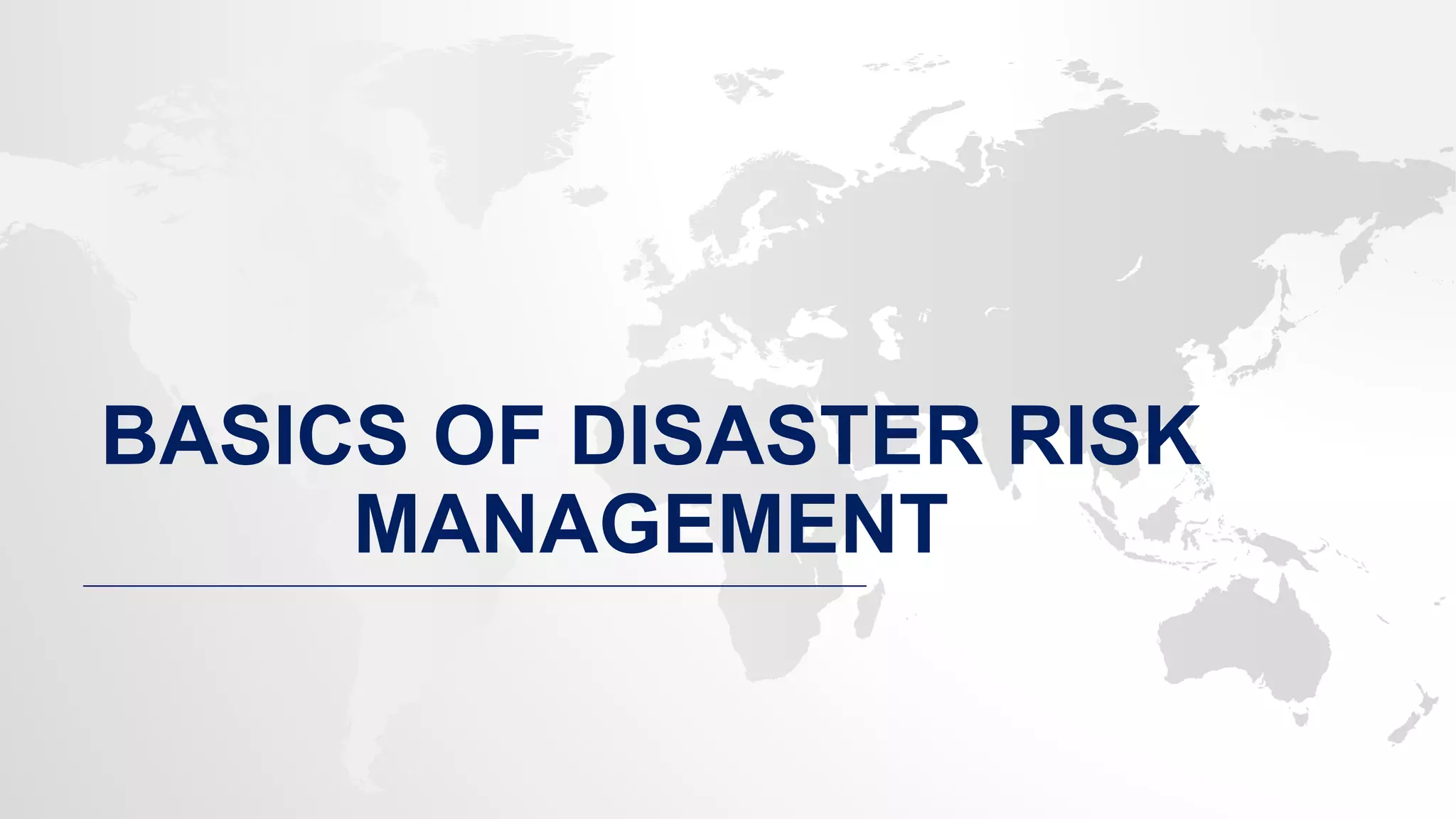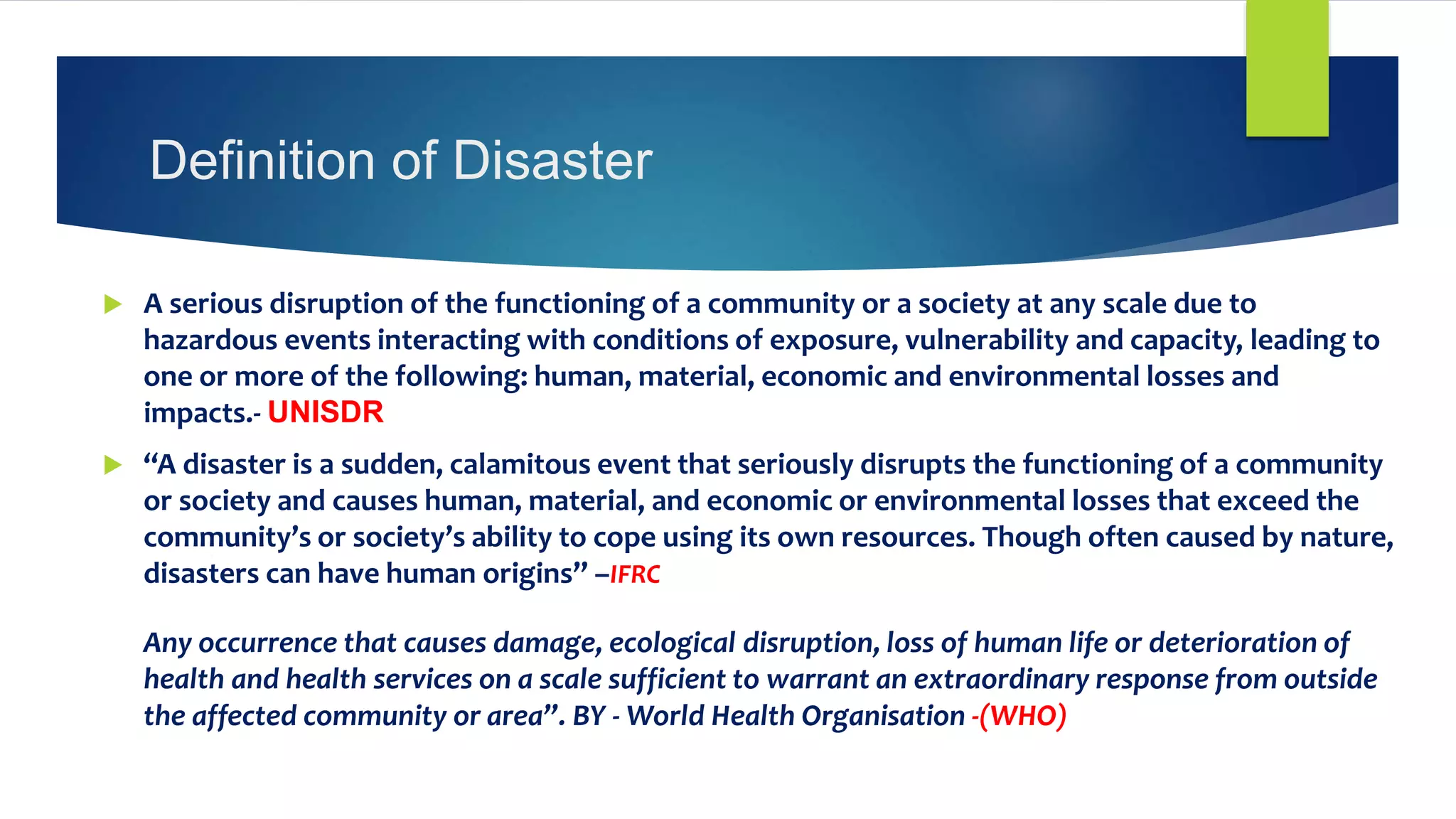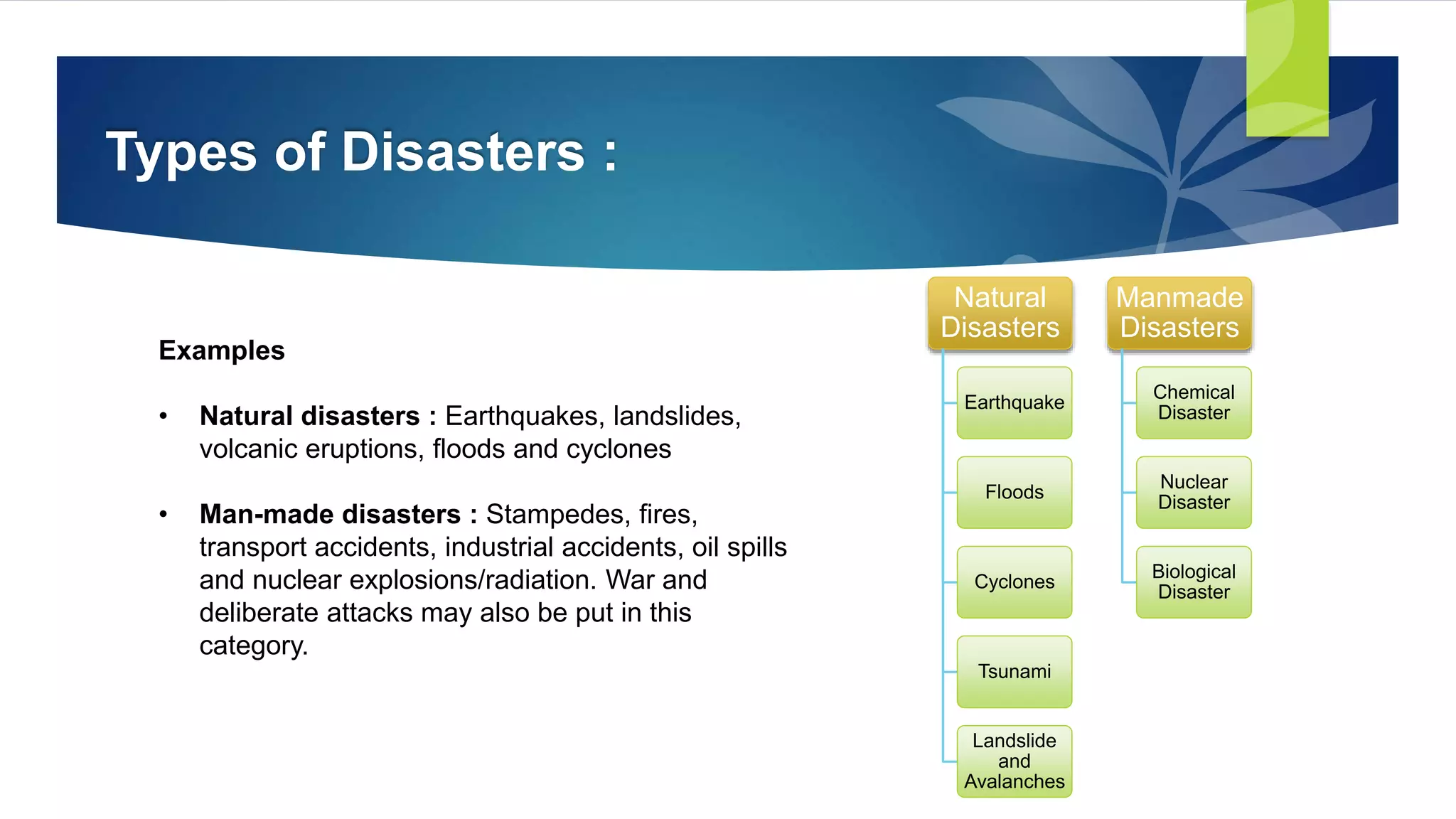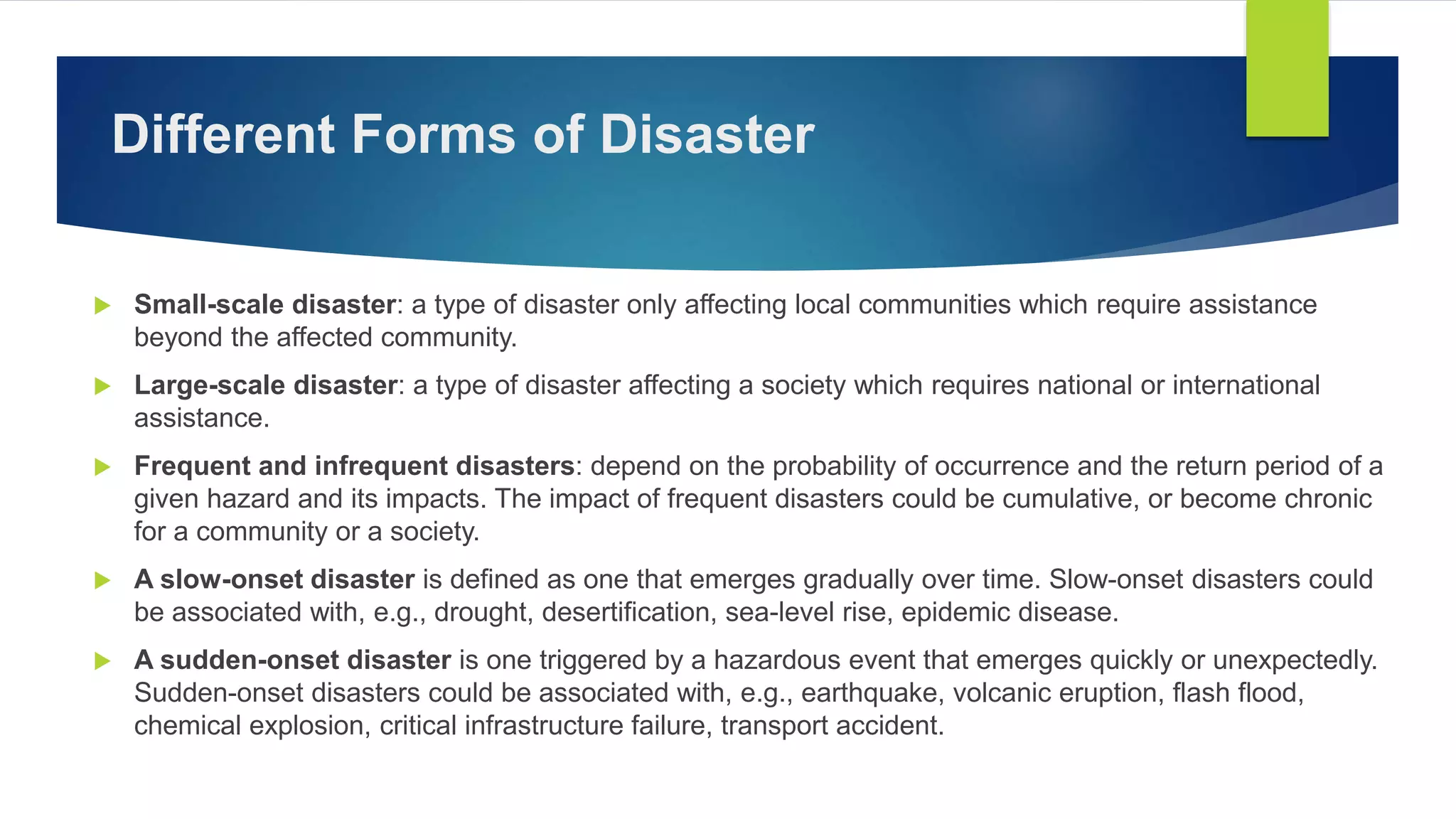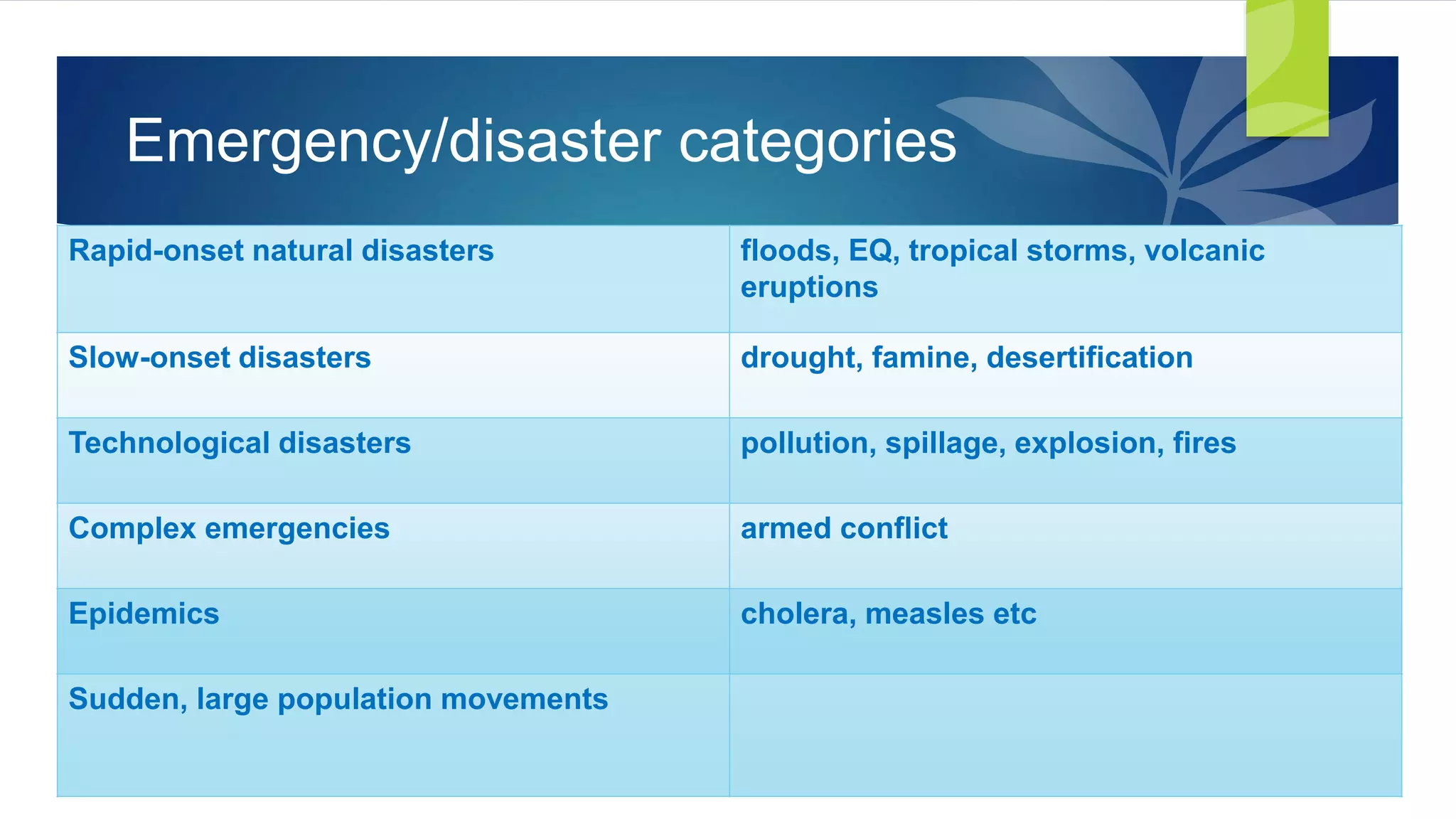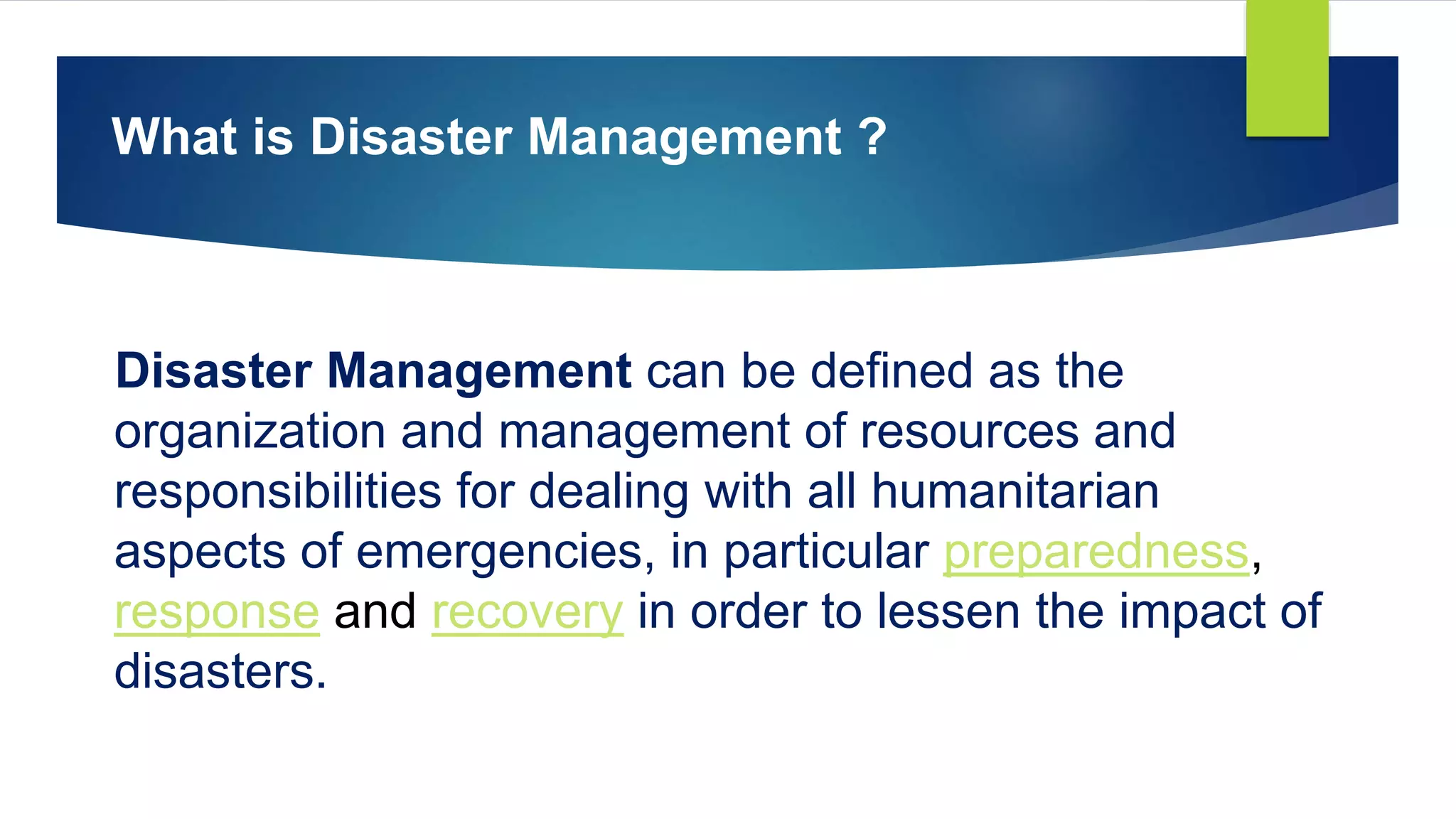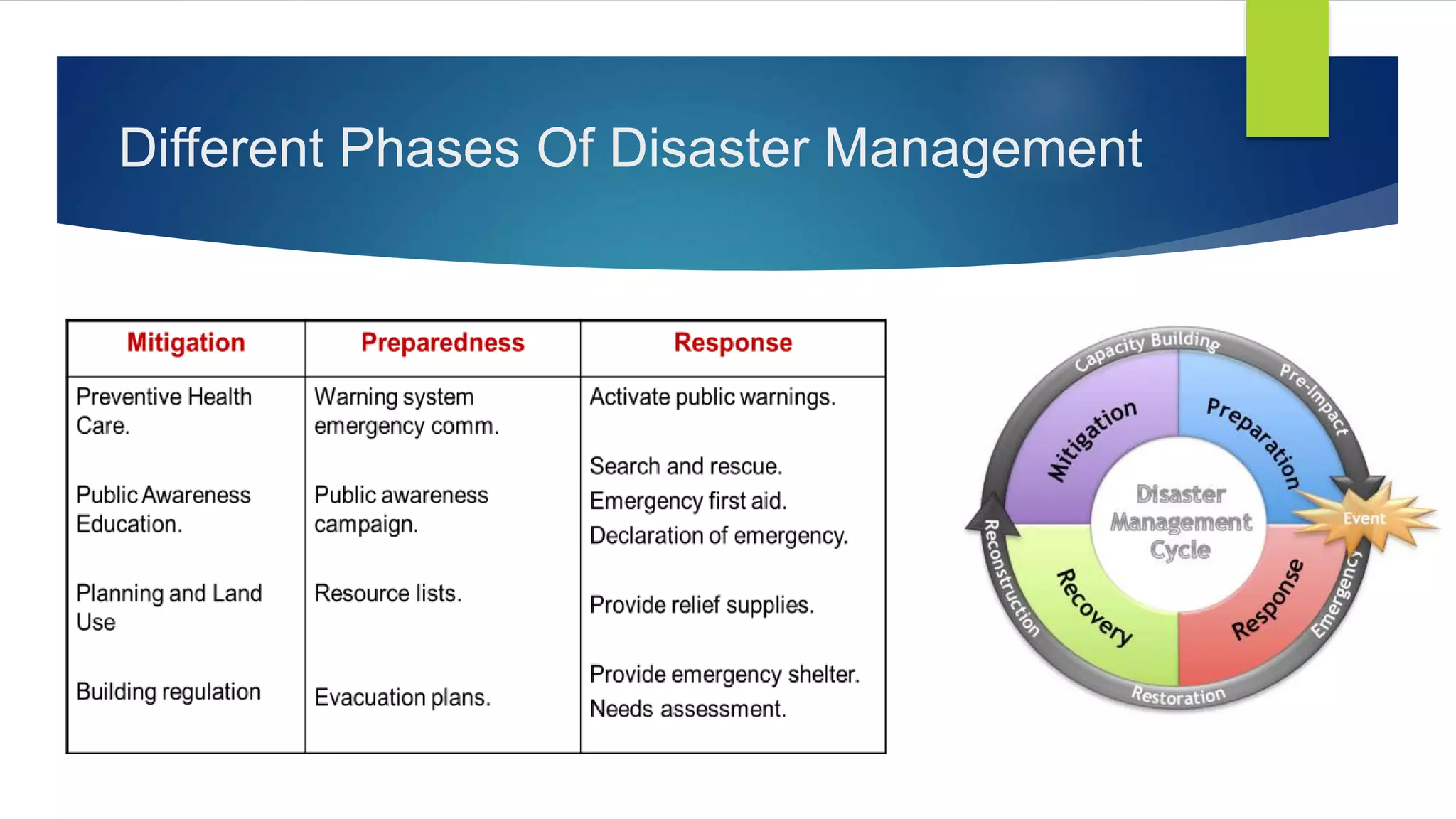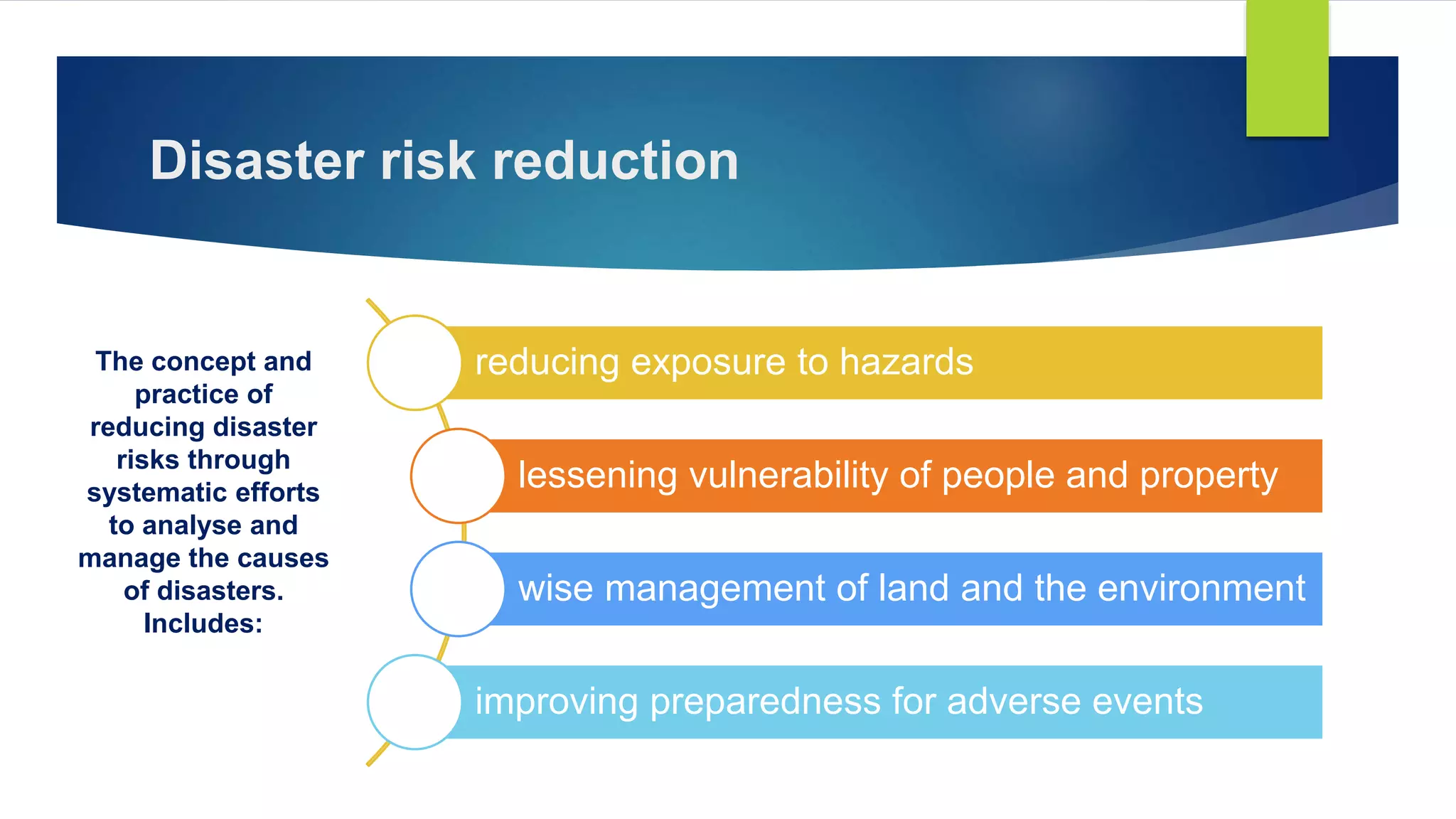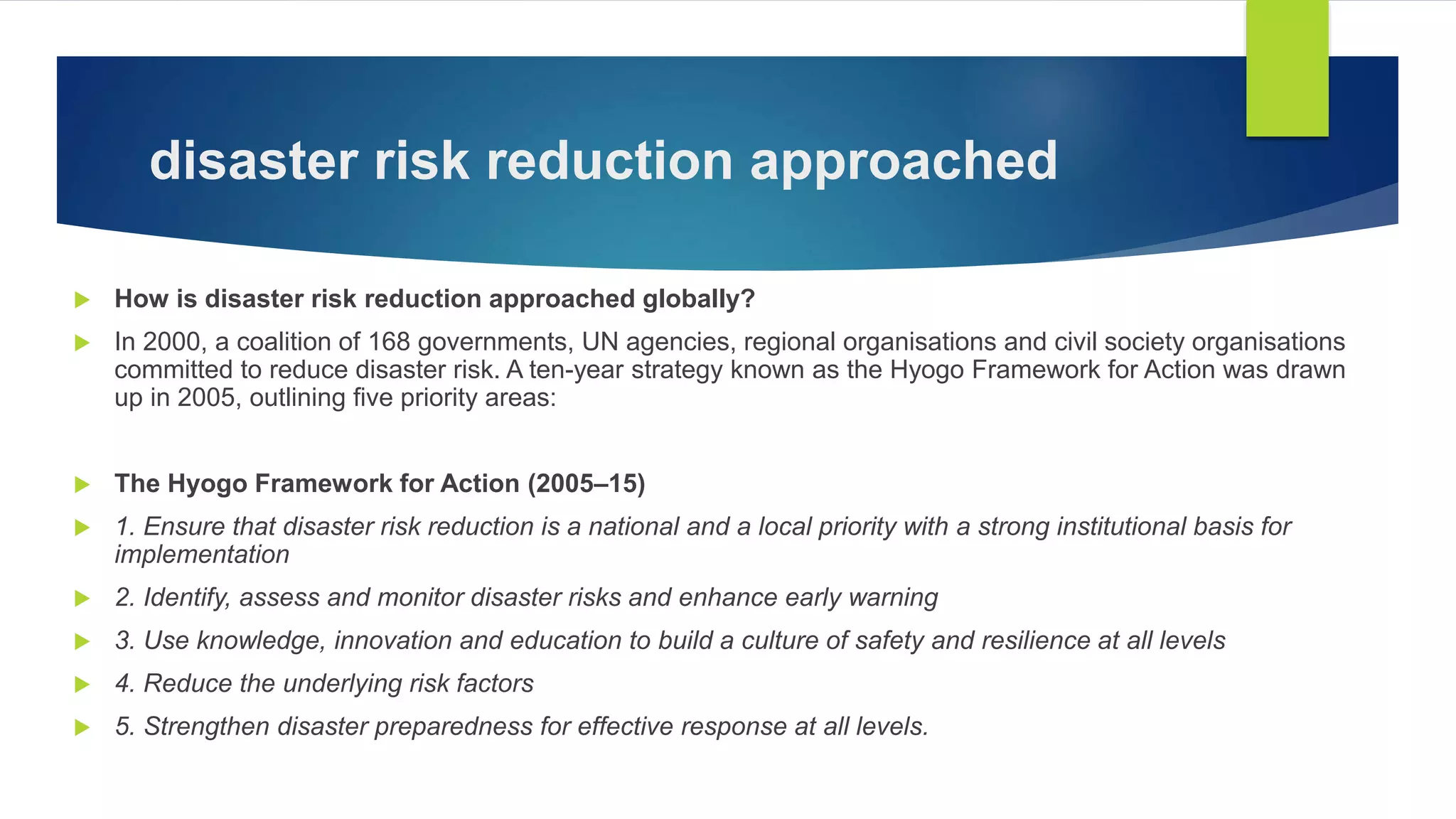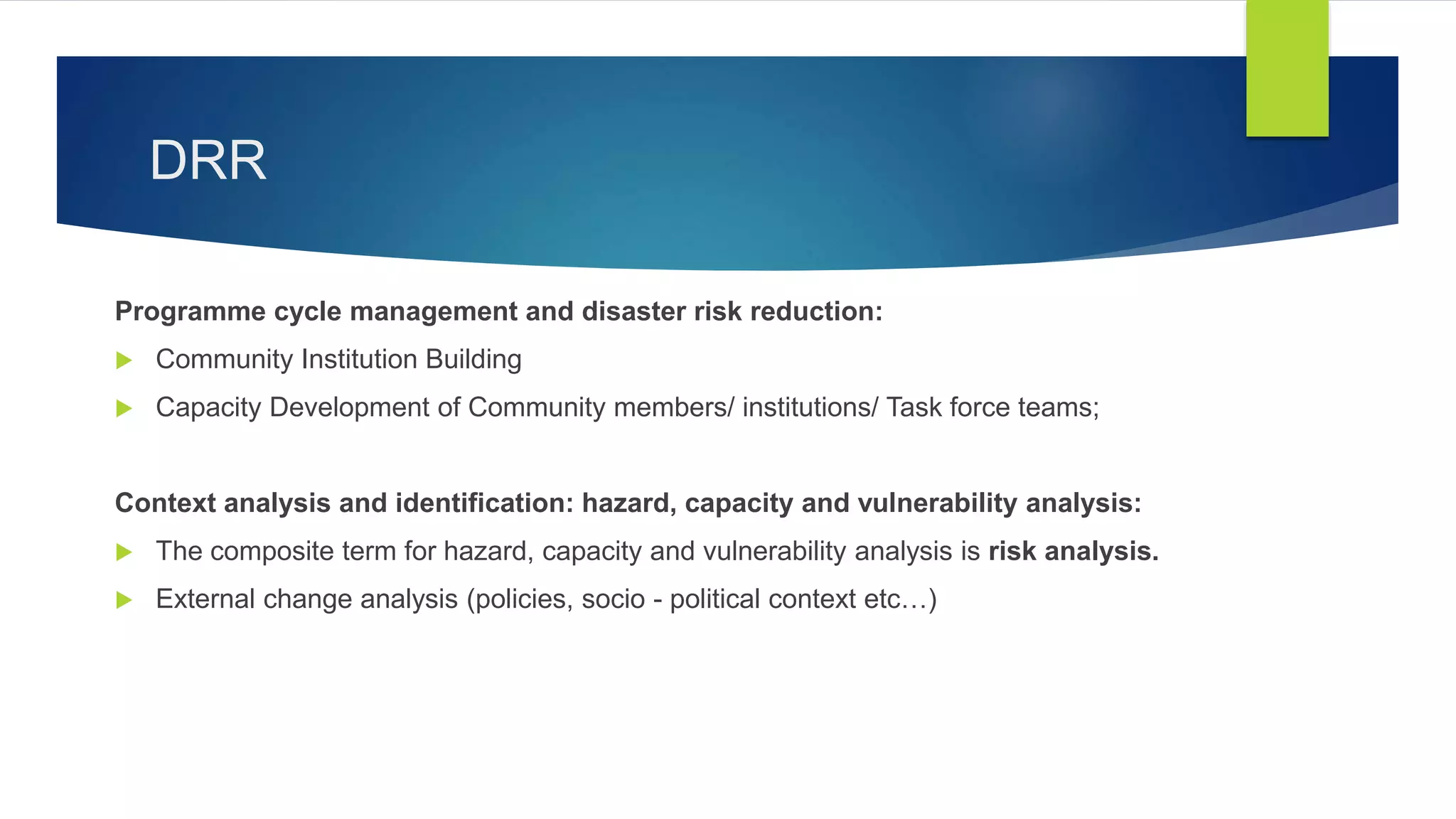Disaster risk management involves reducing risks through systematic efforts to analyze and manage hazards, exposure, vulnerability, and capacity. It includes preparedness, response, and recovery efforts to lessen disaster impacts. The document outlines key concepts in disaster risk management, including defining disasters and different types, phases of management from risk reduction to recovery, and principles such as using an integrated and collaborative approach. Disaster risk is a function of hazards and vulnerability moderated by capacity. Risk analysis should involve communities to identify priorities and reduce social exclusions.
